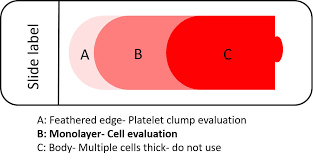Which of the following actions can result in a violation of patient privacy?
Submitting laboratory results to the representative for workers' compensation
Discussing laboratory results with a patient's partner
Providing diagnosis codes to a patient's insurance company
Printing a patient's full name on the specimen label
The Correct Answer is B
Choice A Reason:
Submitting laboratory results to the representative for workers' compensation is generally not a violation of patient privacy. This action is often necessary as part of the claims process and is typically done with the patient's consent or as mandated by law.
Choice B Reason:
Discussing laboratory results with a patient's partner without the patient's explicit consent is a violation of patient privacy. Confidentiality is a fundamental principle in healthcare, and disclosing health information to unauthorized individuals, including family members, breaches that confidentiality.
Choice C Reason:
Providing diagnosis codes to a patient's insurance company is a standard procedure and is not considered a violation of patient privacy. This information is necessary for the insurance company to process claims and provide coverage for medical services.
Choice D Reason:
Printing a patient's full name on the specimen label is standard practice and does not violate patient privacy. This is done to ensure that the specimen is correctly identified and matched to the patient, which is critical for accurate diagnosis and treatment.
Nursing Test Bank
Naxlex Comprehensive Predictor Exams
Related Questions
Correct Answer is A
Explanation
Choice A reason:
The date of specimen collection is crucial for a laboratory report as it provides the context for the test results. It helps in assessing the timeliness and relevance of the results, especially when monitoring conditions that can change rapidly over time.
Choice B reason:
While the phlebotomist's initials may be recorded as part of the internal process for tracking specimen collection, they are not typically included in the patient's laboratory report. The focus of the report is on the patient and the test results, rather than on the personnel who collected the sample.
Choice C reason:
Patient diagnosis is not usually included in a laboratory report because the purpose of the report is to provide test results that may inform a diagnosis. The diagnosis is made by the healthcare provider based on the test results, along with other clinical information.
Choice D reason:
Values of previous tests may be referenced in a patient's medical record but are not a required element on a laboratory report. Each report typically presents the results of the current tests only. Comparisons to previous values, if needed, are made by the healthcare provider.
Correct Answer is D
Explanation
Choice A reason:
Covering a quarter of the slide is not an acceptable criterion for the quality of a peripheral blood smear. The smear should be spread across the slide in a manner that allows for proper examination under a microscope, and covering only a quarter of the slide would not provide enough area for an adequate assessment.
Choice B reason:
Having a well-defined edge is not specifically indicative of the quality of a peripheral blood smear. While the edges should be clean to allow for clear viewing of the cells at the margins, the quality is more accurately determined by the distribution and integrity of the cells on the slide.
Choice C reason:
Covering the entire slide is also not a criterion for a quality peripheral blood smear. In fact, if the blood covers the entire slide, it may be too thick to allow for proper cell differentiation and examination. A proper smear should have a gradient of cell distribution, ending with a feathered edge.
Choice D reason:
A feathered edge is the correct criterion for a quality peripheral blood smear. The feathered edge is the thinnest part of the smear and is where the cells are ideally distributed in a single layer, which is optimal for microscopic examination. This allows for the best visualization of cell morphology and is essential for accurate diagnosis.

Whether you are a student looking to ace your exams or a practicing nurse seeking to enhance your expertise , our nursing education contents will empower you with the confidence and competence to make a difference in the lives of patients and become a respected leader in the healthcare field.
Visit Naxlex, invest in your future and unlock endless possibilities with our unparalleled nursing education contents today
Report Wrong Answer on the Current Question
Do you disagree with the answer? If yes, what is your expected answer? Explain.
Kindly be descriptive with the issue you are facing.
